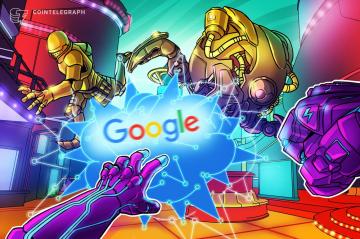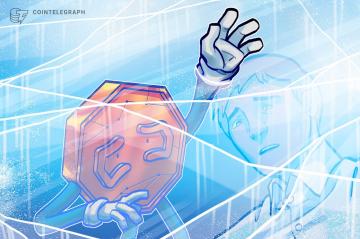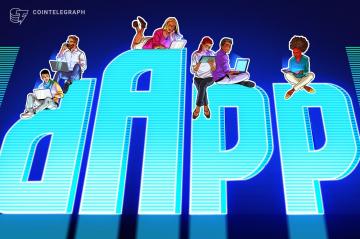Multiple factors have driven the development of artificial intelligence (AI) over the years. The ability to swiftly and effectively collect and analyze enormous amounts of data has been made possible by computing technology advancements, which have been a significant contributing factor.
Another factor is the demand for automated systems that can complete activities that are too risky, challenging or time-consuming for humans. Also, there are now more opportunities for AI to solve real-world issues, thanks to the development of the internet and the accessibility of enormous amounts of digital data.
Moreover, societal and cultural issues have influenced AI. For instance, discussions concerning the ethics and the ramifications of AI have arisen in response to worries about job losses and automation.
Concerns have also been raised about the possibility of AI being employed for evil intent, such as malicious cyberattacks or disinformation campaigns. As a result, many researchers and decision-makers are attempting to ensure that AI is created and applied ethically and responsibly.
After +1000 tech workers urged pause in the training of the most powerful #AI systems, @UNESCO calls on countries to immediately implement its Recommendation on the Ethics of AI - the 1st global framework of this kind & adopted by 193 Member Stateshttps://t.co/BbA00ecihO pic.twitter.com/GowBq0jKbi
— Eliot Minchenberg (@E_Minchenberg) March 30, 2023AI has come a long way since its inception in the mid-20th century. Here’s a brief history of artificial intelligence.
Mid-20th century
The origins of artificial intelligence may be dated to the middle of the 20th century, when computer scientists started to create algorithms and software that could carry out tasks that ordinarily need human intelligence, like problem-solving, pattern recognition and judgment.
One of the earliest pioneers of AI was Alan Turing, who proposed the concept of a machine that could simulate any human intelligence task, which is now known as the Turing Test.

Related: Top 10 most famous computer programmers of all time
1956 Dartmouth conference
The 1956 Dartmouth conference gathered academics from various professions to examine the prospect of constructing robots that can “think.” The conference officially introduced the field of artificial intelligence. During this time, rule-based systems and symbolic thinking were the main topics of AI study.
1960s and 1970s
In the 1960s and 1970s, the focus of AI research shifted to developing expert systems designed to mimic the decisions made by human specialists in specific fields. These methods were frequently employed in industries such as engineering, finance and medicine.
1980s
However, when the drawbacks of rule-based systems became evident in the 1980s, AI research began to focus on machine learning, which is a branch of the discipline that employs statistical methods to let computers learn from data. As a result, neural networks were created and modeled after the human brain’s structure and operation.
1990s and 2000s
AI research made substantial strides in the 1990s in robotics, computer vision and natural language processing. In the early 2000s, advances in speech recognition, image recognition and natural language processing were made possible by the advent of deep learning — a branch of machine learning that uses deep neural networks.
The first neural language model, that's Yoshua Bengio, one of the "Godfathers of Deep Learning"! He is widely regarded as one of the most impactful people in natural language processing and unsupervised learning.
Learn something new in https://t.co/8mUYA31M9R… pic.twitter.com/4f2DUE5awF
— Damien Benveniste (@DamiBenveniste) March 27, 2023Modern-day AI
Virtual assistants, self-driving cars, medical diagnostics and financial analysis are just a few of the modern-day uses for AI. Artificial intelligence is developing quickly, with researchers looking at novel ideas like reinforcement learning, quantum computing and neuromorphic computing.
Another important trend in modern-day AI is the shift toward more human-like interactions, with voice assistants like Siri and Alexa leading the way. Natural language processing has also made significant progress, enabling machines to understand and respond to human speech with increasing accuracy. ChatGPT — a large language model trained by OpenAI, based on the GPT-3.5 architecture — is an example of the “talk of the town” AI that can understand natural language and generate human-like responses to a wide range of queries and prompts.
Related: Biased, deceptive’: Center for AI accuses ChatGPT creator of violating trade laws
The future of AI
Looking to the future, AI is likely to play an increasingly important role in solving some of the biggest challenges facing society, such as climate change, healthcare and cybersecurity. However, there are concerns about AI’s ethical and social implications, particularly as the technology becomes more advanced and autonomous.
Ethics in AI should be taught in every school.
— Julien Barbier ❤️☠️ 七転び八起き (@julienbarbier42) March 30, 2023Moreover, as AI continues to evolve, it will likely profoundly impact virtually every aspect of our lives, from how we work and communicate, to how we learn and make decisions.





























































